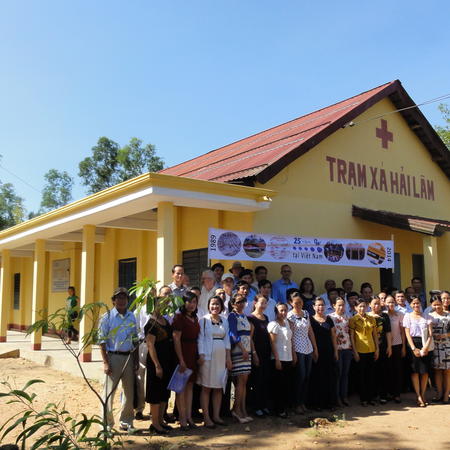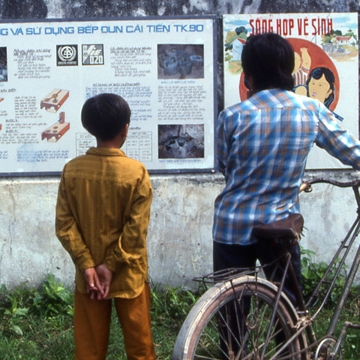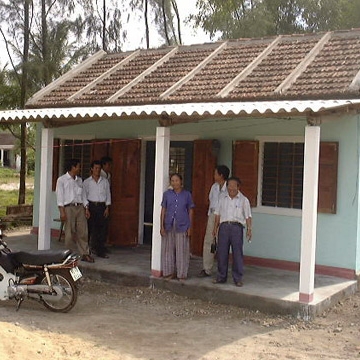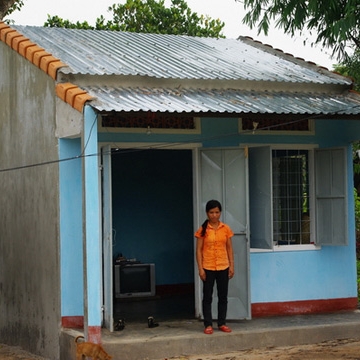- English
- Français
- Tiếng Việt
Vulnerability - more to lose
Increased investment in shelter has raised family exposure to loss
In the past 30 years Viet Nam has been gradually emerging from years of poverty and strife. Poverty, as measured by per-capita expenditure*, decreased from 60% to 29% between 1993 and 2002 and recent studies confirm this trend. But levels of rural poverty still remained higher at a national average of 35.6 in 2002 (compared to 66% in 1993).
This growth and improvement in general conditions in Viet Nam can largely be attributed to the economic reforms launched by the Vietnamese government in 1986, Doi Moi, which moved Viet Nam towards a market economy and contributed to a growth in family revenues. More families have been able to make small investments to acquire commodities like bicycles, and the last two decades have seen the start of formalized opportunities to borrow for income generation activities. This is matched by a strong demand for education and better services with 94% of children goiing to school.
Despite this encouraging picture, a very significant proportion of families is still living below the poverty line and cannot satisfy the bare necessities of life, and a large proportion of families also live precariously just above it. Many of the latter families are ‘temporarily poor’, resorting to a variety of secondary activities in order to compensate for irregular incomes. The “temporarily poor” are defined as families whose income levels fluctuate above and below an acceptable minimum level during periods of natural disaster and economic crisis. Source: Vu Tuan Anh, GSO Viet Nam 1999.
In this context, the reduction of vulnerability* is a key component of reducing poverty: it only takes a small mishap for a family to return to conditions of near starvation, ill health and debt. And for most families, losing their home is one of the biggest calamities that can happen. Why? Because the home is one of the largest investments that a family will ever make, and it is fundamental for family stability and growth. A decent and disaster resistant home provides security to the family, its health and its possessions, including those needed for income generating activities.
Achieving a decent and structurally resistant home has invariably required enormous effort and saving. Families who have been interviewed in central Viet Nam* describe years of effort and investment to achieve a ‘decent’ home; but sadly this incremental investment has too often been destroyed by storms and typhoons, largely because both materials and structure are frequently not used well nor in a manner that assures their security. Many families tell of their home being destroyed repeatedly by typhoons.
Sources
World Ban Report 'Weathering the Storm: Options for Disaster Risk Financing in Vietnam' June 2010
Vu Tuan Anh, "Vietnam living standards survey 1997-98 – analysis", Hanoi 1999/VN GSO.
UNDP Human Development report 1999.
Viet Nam Living standards survey 1997 – 1998, Hanoi 1999, Viet Nam General Statistical Office.
World Bank report: "Viet Nam: attacking poverty", November 1999.
Lam Ngoc Mai, "Études de cas des familles bénéficiaires du projet" DW & ENDA, Hué, July 2001











